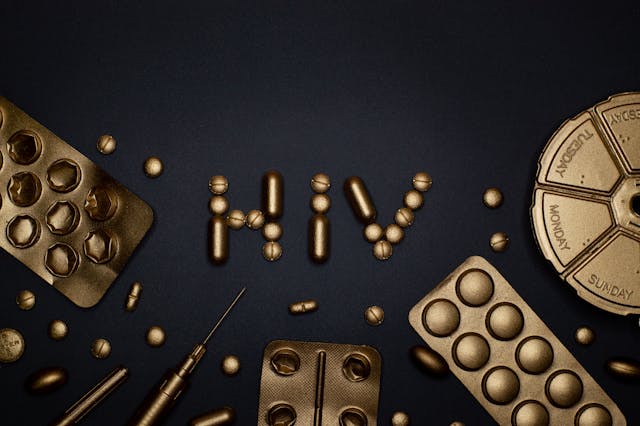HIV has been responsible for taking millions of lives ever since its emergence in the early 20th century. Oral PrEP (pre-exposure prophylaxis) – in the form of a daily pill – is a widely used method to protect people at risk. However, it is not without flaws. Oral PrEP only works if taken consistently. Whether people forget to take their pill or avoid taking it due to societal stigma, human nature falters the power of this treatment.
But what if protection against HIV required just a single shot every year? New research into the capabilities of Lenacapavir aims to do exactly this.
While most HIV medications focus on blocking the virus from copying itself or stopping the virus entering cells, Lenacapavir goes after a different target – the capsid. This is the protein shell that wraps around the virus’s genetic material. The capsid plays several important roles: it helps the virus hide its genetic code, get the code safely into the cell’s control centre, and later, package new virus particles to infect more cells.
By locking onto the capsid, Lenacapavir manages to disrupt the virus at several points in its life cycle. This not only makes it harder for HIV to adapt and develop resistance , but it also means the drug can stick around and stay active in the body for a long time. Lenacapavir as a twice-yearly injection has shown it can outperform daily pills in large trials. Now, researchers are testing whether it could be given just once a year!
Jogiraju and colleagues set out to test just this. For the once a year shot, researchers increased the total dose and switched from injecting under the skin to injecting into the muscle, allowing the drug to be stored and released at protective levels for over a year. The results were encouraging. Drug levels in the blood remained higher than those achieved with the twice-yearly injections known to prevent HIV. Furthermore, the shots were generally well tolerated, with mild to moderate pain at the injection site being the most common side effect. Plans to lower the dose in future studies may make the injections even more tolerable.
These findings could make Lenacapavir a true game-changer in battling the monster of a virus that is HIV! A shot once a year could offer a more effective and convenient way to prevent HIV, overcoming many of the challenges of daily pills.
It is important to note that this was a small study that didn’t include a wide or diverse group of participants. Larger trials are planned to better understand how well this approach works, how safe it is in the long term, and what the best dosing strategy would be.
This is just the beginning. But a once-a-year prevention shot could bring us immensely closer to drastically lowering HIV infections worldwide.
Written by Snigdha Manoj, an undergraduate in Biological Sciences.
Edited by Emma Walsh, a 3rd year Biomedical Sciences student and EUSci Online Editor.
REFERENCES:
- Jogiraju, V., Pawar, P., Yager, J., Ling, J., Shen, G., Chiu, A., Hughes, E., Palaparthy, R., Carter, C. and Singh, R. (2025). Pharmacokinetics and safety of once-yearly lenacapavir: a phase 1, open-label study. The Lancet. [online] doi:https://doi.org/10.1016/s0140-6736(25)00405-2.
- Di Perri, G. (2023). Pharmacological outlook of Lenacapavir: a novel first-in-class Long-Acting HIV-1 Capsid Inhibitor. Le infezioni in medicina : rivista periodica di eziologia, epidemiologia, diagnostica, clinica e terapia delle patologie infettive, 31(4). doi:https://doi.org/10.53854/liim-3104-8.


Leave a Reply